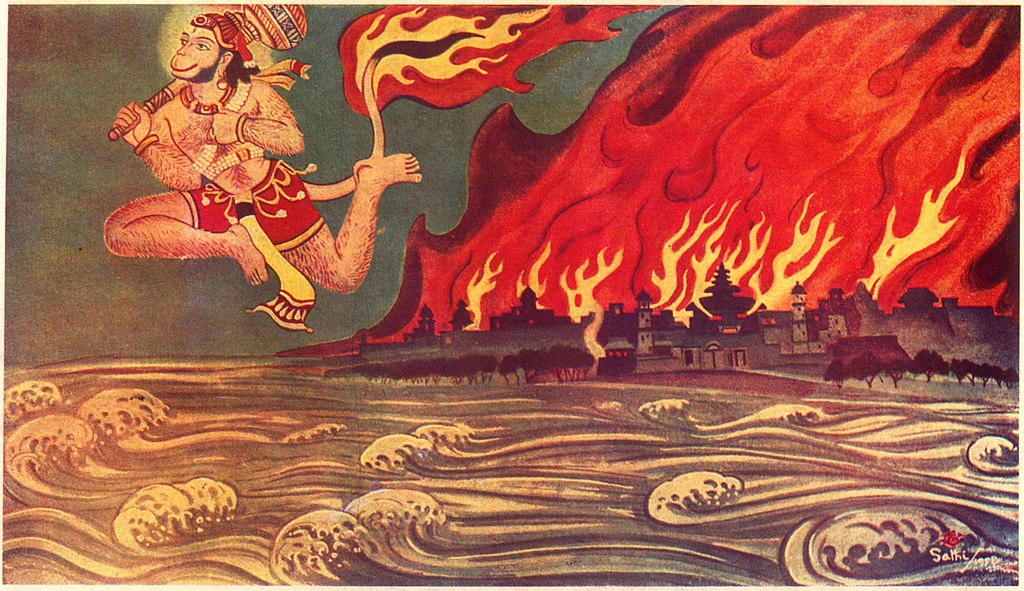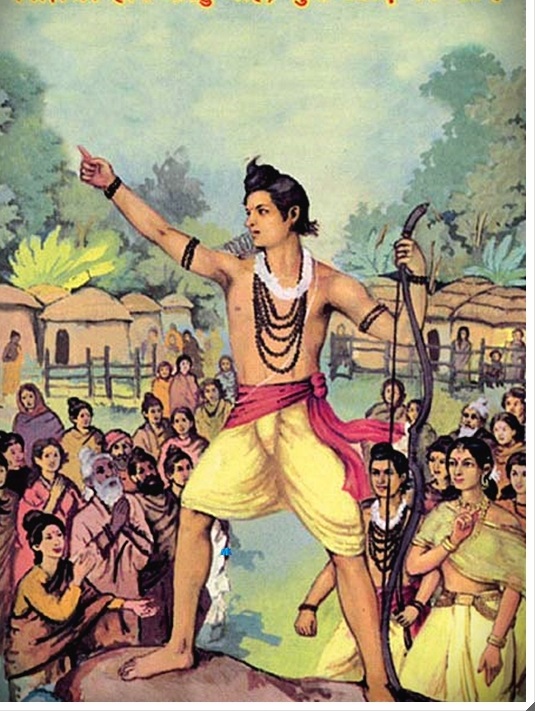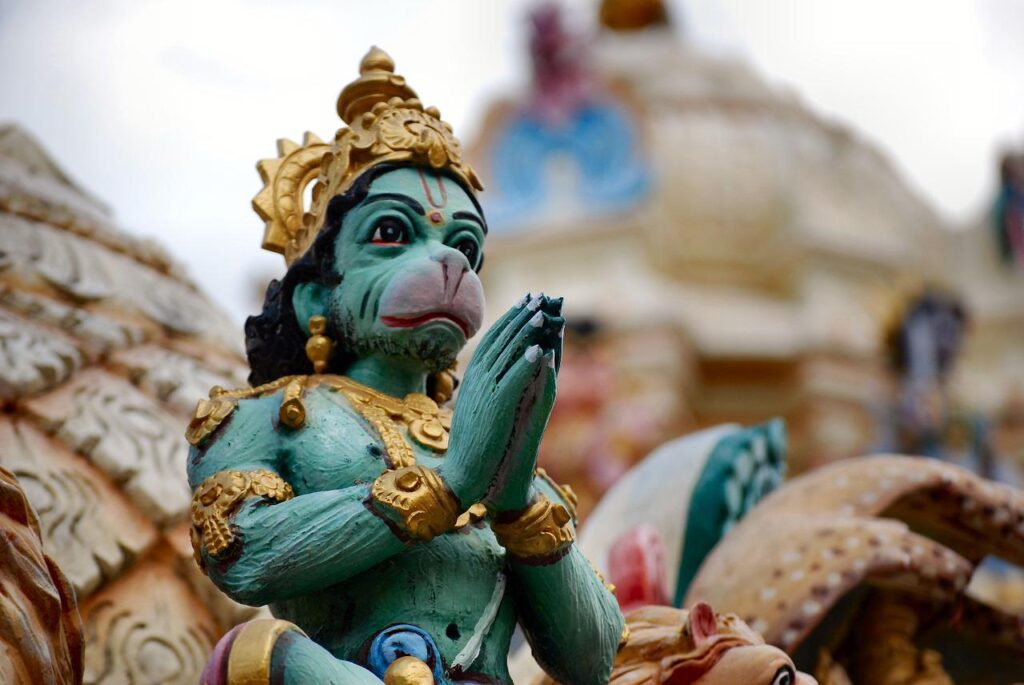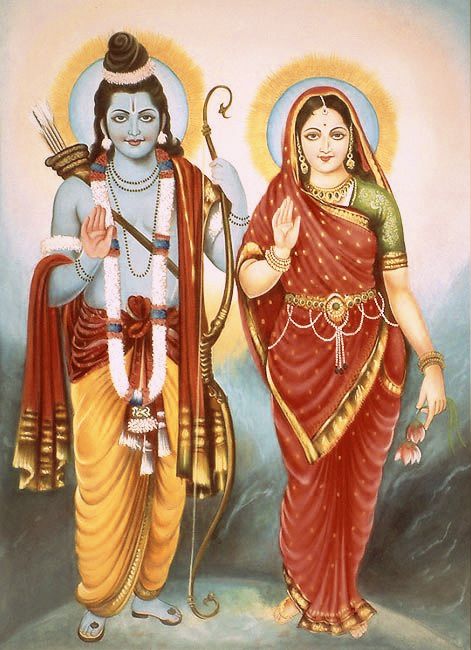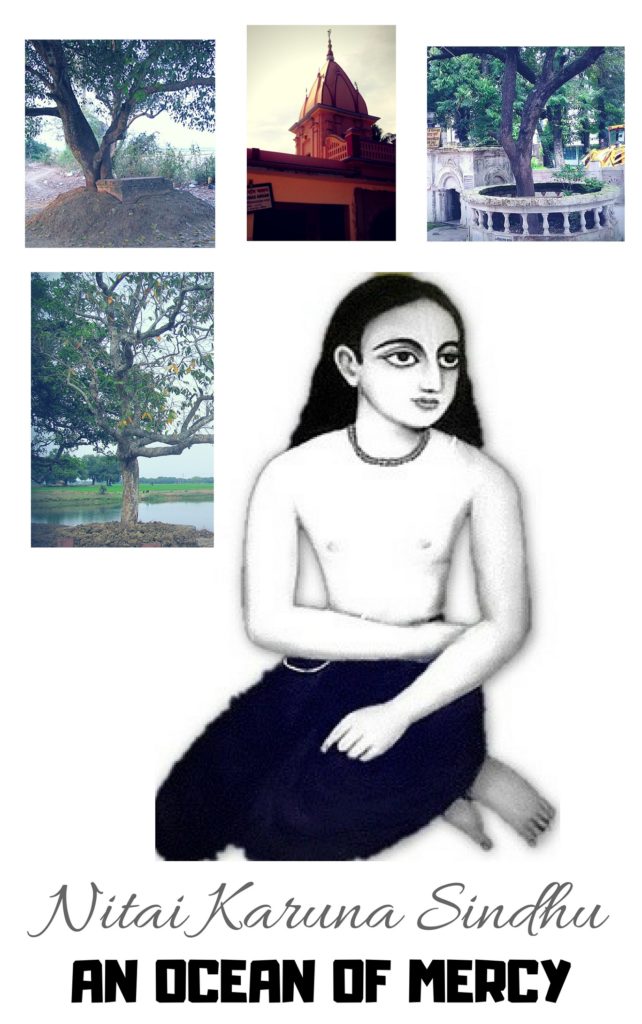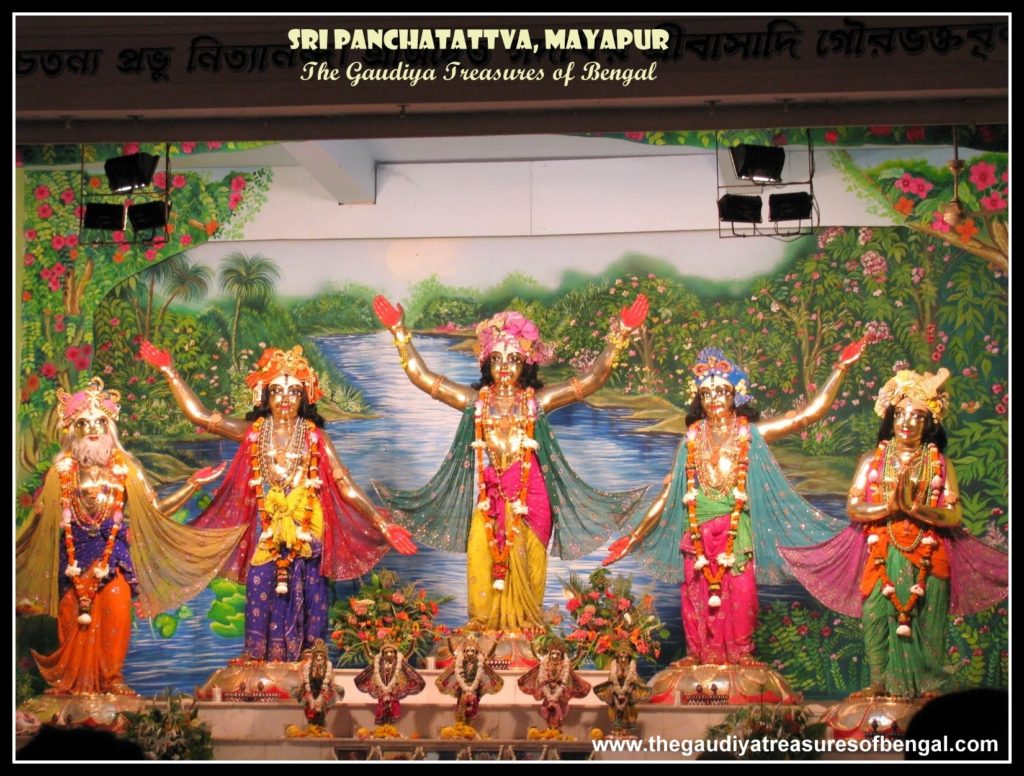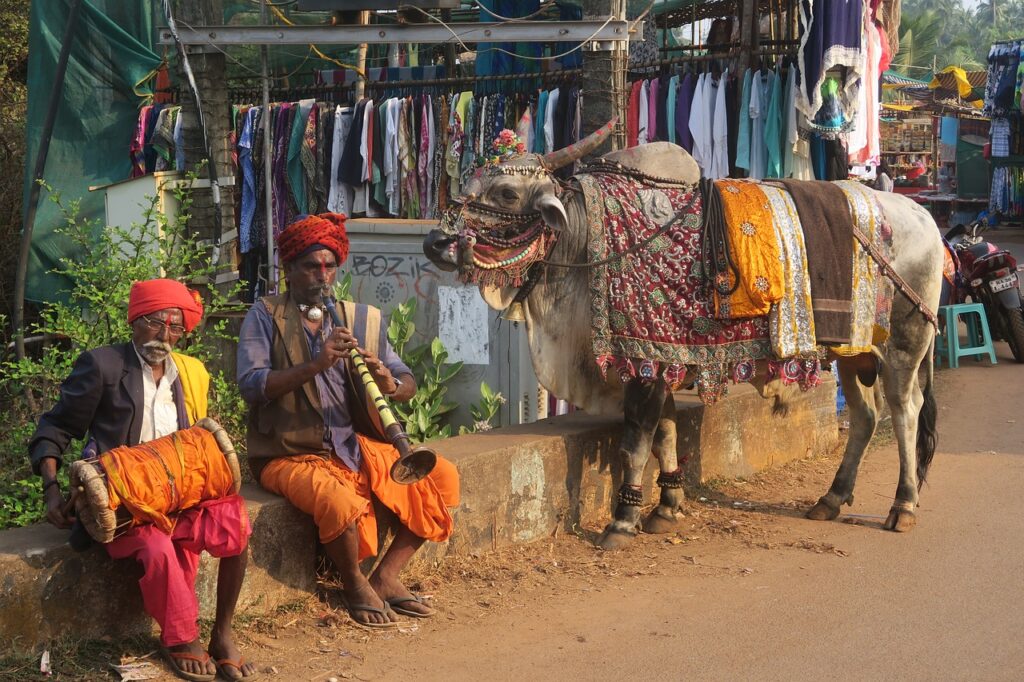
On the ninth day of the bright fortnight of the month of Chaitra in Treta Yuga, Lord Ramachandra appeared in Ayodhya, a city in northern India. This day has since been celebrated by the entire world as Ram Navami. The ninth canto of Bhagavata Purana states that Lord Ramachandra was born in the dynasty of Maharaja Khatvanga. The son of Maharaja Khatvanga was Dirghabahu and his son was Raghu. Aja was the son of Raghu and the son of Aja was Dasaratha. Lord Ramachandra was the son of Dasaratha and mother Kaushalya. King Dasarath had three wives – Kaushalya, Kaikeyi, and Sumitra. Ramachandra was none other than Vishnu, the Supreme Lord and He had descended into this world along with His full quadruple expansion – as Lord Rama, and brothers Lakshmana, Bharata, and Shatrughna. Bharata was the son of Kaikeyi while Lakshmana and Shatrughna were the sons of Sumitra.
